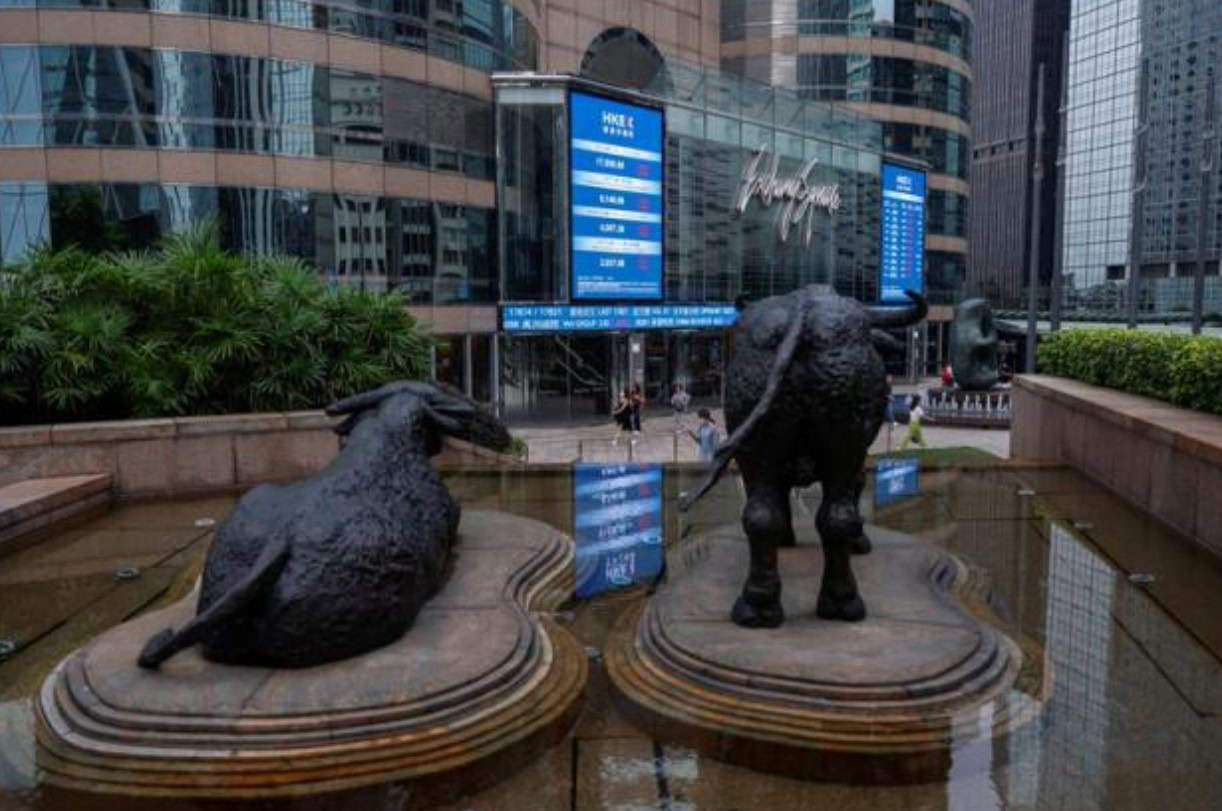Global shares edged into the red on Monday and investors, wary of rate hike narratives, braced for U.S. inflation data and a corporate reporting season where robust results are needed to justify high valuations.
Geopolitical tensions were also on the radar as disruptions in the Red Sea raised shipping costs in Europe, while the Israeli conflict with Hamas threatened to spread to Lebanon.
European oil and gas stocks fell 1.8% (.SXEP) on the STOXX 600 as crude prices dipped following sharp price cuts by top exporter Saudi Arabia and a rise in OPEC output.
Oil prices , fell by more than 2% on sharp price cuts by top exporter Saudi Arabia and a rise in OPEC output, offsetting worries about escalating tensions in the Middle East.
There was more promising news from Washington where U.S. congressional leaders agreed on a $1.6 trillion spending deal aimed at averting a partial government shutdown.
Early gains during Asian trading vanished as MSCI’s broadest index of stocks (.MIAPJ0000PUS) slipped almost 1% after retreating 2.5% last week.
European stocks fell, extending their lacklustre start to 2024 weighed down by tepid energy shares, while a rise in government bond yields weighed on risk sentiment.
The pan-European STOXX 600 <.STOXX> was last down 0.3%, extending the previous week’s decline of 0.5%, while U.S. stock futures pointed to a weak open for Wall Street on Monday ,
Japan’s Nikkei (.N225) was closed for a holiday, while Chinese blue chips (.CSI300) lost 1.1% to hit near five-year lows.
The timing and scale of U.S. rate cuts remained in the driving seat.
“We foresee that continuing disinflation will eventually lead the Fed to reduce rates in May,” said Bruno Schneller, managing director at INVICO Asset Management.
“However, given the mixed signals from inflation data, policymakers are expected to hold off on easing measures until then.”
Data on Friday showed U.S. employers hired more workers than expected in December, dousing expectations of rapid easing of interest rates. However, a survey from the Institute for Supply Management (ISM) showed activity in the services sector fell in December, pointing to a weaker economy.
The S&P 500 lost 1.5% last week to break a nine-week winning streak, its longest since 1989. The index’s 24% rally last year means valuations are looking a little stretched, so much is riding on the upcoming results season.
Major banks including JPMorgan Chase (JPM.N) and Citigroup <C.N> start the reporting rush on Friday with hopes high for upbeat profits.
Consensus forecasts are that S&P 500 profits rose 3% on the year with Goldman Sachs expecting higher results.
“The bar ahead of Q4 results is higher than in recent quarters, but we expect S&P 500 firms in aggregate will beat analyst forecasts,” Goldman analysts wrote in a note.
“Our baseline 2024 forecast is S&P 500 EPS (earnings per share) rises by 5% year/year, and we see potential upside from stronger U.S. economic growth, lower interest rates, and a weaker USD (dollar).”
EYEING THE CPI
Money markets price in around 136 basis points of U.S. rate cuts next year, compared to the Federal Reserve’s dot plot of 75 bps.
The probability of a move as early as March has been pared somewhat to a still-high 64%, and that will likely shift again depending on Thursday’s U.S. inflation data.
Forecasts are for core CPI to rise 0.2% in December, pulling annual inflation down to 3.8% and its lowest since mid-2021.
Despite expectations that the Fed’s next step would be to reduce rates, the time and extent of easing will hinge on upcoming economic data, said INVICO Asset Management’s Schneller.
“For the Fed to align with market expectations, supportive hard data is essential,” he said.
At least four Fed speakers speak this week to offer their outlooks, with New York Fed President John Williams likely to be the most influential.
Inflation data from China and Tokyo are also due this week, with analysts looking for deflation to ease a touch in China.
In currency markets, the dollar slipped almost 0.2% to 144.36 yen , while the euro was flat at around $1.0940 , after falling 0.9% last week.
The dollar’s rally was a headwind for gold, which eased 0.9% to $2,028 an ounce .

